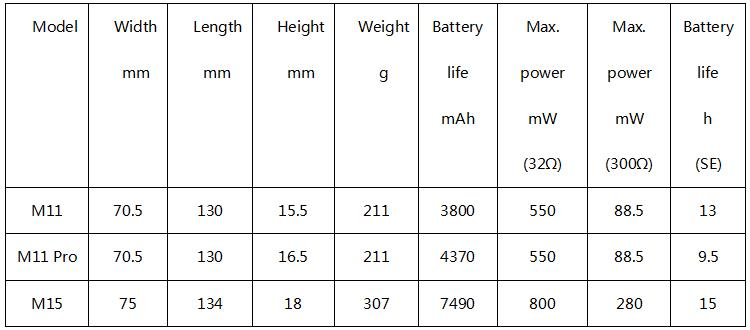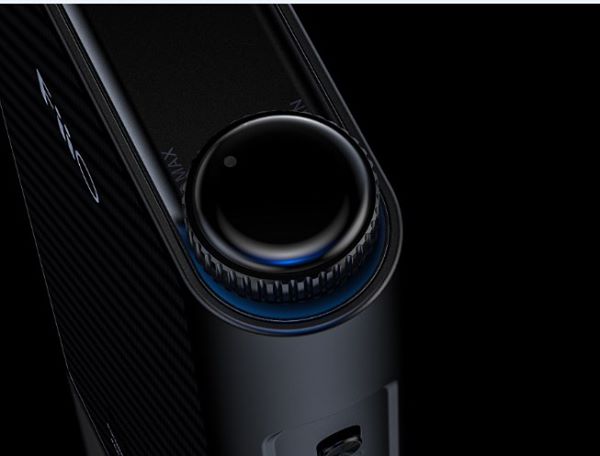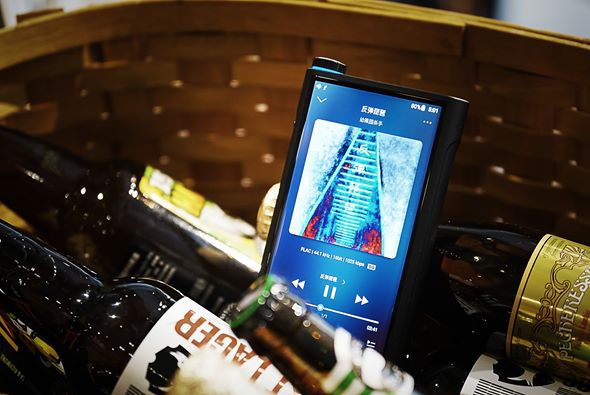Part I Introduction & Project Origin
Preface
After releasing the M15 at the end of 2019, we have received overwhelming responses out of our expectations from the market and users. Not only did the M15 sell out soon after going public, but the feedback from consumers was also very positive.
There are several reasons for me to write this series of articles.
1)The price of the M15 is relatively high. For those who are interested but still considering, the online review is just a reference due to the lack of hands-on experience. Furthermore, it is difficult to understand designers' thoughts and ideas by simply looking at its parameter and configuration. Therefore, this series of articles would offer you an opportunity to learn more about the M15.
2)Through these articles, I could make a thorough explanation of some features of the M15. Because I don't think the M15's introduction on the official website, the product introduction page or the press conference is completely clear. Therefore, it is still necessary to write it down for further analysis.
3)It is also found that consumers like to listen to stories, including the ins and outs of products, and some stories behind R&D. I hope that these articles will meet your curiosity.
4)Last but not least, some technical guidance and responses to some hot-spot topics will also be involved.
In a word, these writings do not focus on promoting products and calling more people to buy them. On the contrary, what we are mostly worried about is not the sales volume, but consumers who don't know enough about the M15, and thus be disappointed at the brand and product. The M15 is the flagship symbol of portable players in FiiO's product line, which does not undertake the task of making money. It is something important about FiiO's technical strength and product philosophy.
The Origin of the Project: Legendary X9
If you are an old user of FiiO players, you would have known that FiiO players have always been named as X series. In fact, after the X7 was released, old users have kept calling for a better and more advanced X9.
However, because of the worse market condition at that time that there were rarely-seen Chinese players exceeding 700USD. The X7 has been sold at 649.99USD, so will the X9 is definitely over 700USD. It would be a big question whether the market and users can accept it or not. Additionally, we could only acquire Rockchip's RK series chips that has corresponding development capabilities at the time. In fact, many users were already very dissatisfied with the X5III and X7II. Because with such an old and high-power consumption Soc on a high end player, I'm afraid that customers would not accept it.
Therefore, we first spent a lot of effort to apply Samsung's SoC platform 7270 to low-to-mid-end HiFi players, like the M6, M7 and M9, in order to accumulate experience and simultaneously establish a cooperative relationship with Samsung. After all, Samsung was still very skeptical about the development capabilities of Chinese manufacturers, so it would not open up the mid-to-high-end chips to FiiO at once.
Now came to the part that you knew. FiiO won the trust of Samsung successfully. By combining the Exynos7872 SoC with a 5.15-inch 18: 9 720P display screen, FiiO's Android-based mid-to-high-end player platform was eventually built up, managing to release the M11 and M11 Pro to the market in succession.
Of course, you may want to ask why not research and develop the M15 at the beginning? There are two reasons.
1) Generally speaking, the more expensive the price, the less sales. If we started at the higher-end player first, the purchase order to Samsung would be rather smaller, which would affect their support for us. So, we must increase the volume as soon as possible. In this case, we must start with models in large amounts.
2) The higher-end the player, the more technical accumulation is required. With development experience of the M11 and M11Pro, and continuous firmware updates based on market feedback, we have a relatively stable software and hardware platform to be ready for the M15, which help to reduce the development difficulty.
Therefore, when all was set and done, we started the M15 project, making it the flagship model of FiiO portable music player.

Preface
After releasing the M15 at the end of 2019, we have received overwhelming responses out of our expectations from the market and users. Not only did the M15 sell out soon after going public, but the feedback from consumers was also very positive.
There are several reasons for me to write this series of articles.
1)The price of the M15 is relatively high. For those who are interested but still considering, the online review is just a reference due to the lack of hands-on experience. Furthermore, it is difficult to understand designers' thoughts and ideas by simply looking at its parameter and configuration. Therefore, this series of articles would offer you an opportunity to learn more about the M15.
2)Through these articles, I could make a thorough explanation of some features of the M15. Because I don't think the M15's introduction on the official website, the product introduction page or the press conference is completely clear. Therefore, it is still necessary to write it down for further analysis.
3)It is also found that consumers like to listen to stories, including the ins and outs of products, and some stories behind R&D. I hope that these articles will meet your curiosity.
4)Last but not least, some technical guidance and responses to some hot-spot topics will also be involved.
In a word, these writings do not focus on promoting products and calling more people to buy them. On the contrary, what we are mostly worried about is not the sales volume, but consumers who don't know enough about the M15, and thus be disappointed at the brand and product. The M15 is the flagship symbol of portable players in FiiO's product line, which does not undertake the task of making money. It is something important about FiiO's technical strength and product philosophy.
The Origin of the Project: Legendary X9
If you are an old user of FiiO players, you would have known that FiiO players have always been named as X series. In fact, after the X7 was released, old users have kept calling for a better and more advanced X9.
However, because of the worse market condition at that time that there were rarely-seen Chinese players exceeding 700USD. The X7 has been sold at 649.99USD, so will the X9 is definitely over 700USD. It would be a big question whether the market and users can accept it or not. Additionally, we could only acquire Rockchip's RK series chips that has corresponding development capabilities at the time. In fact, many users were already very dissatisfied with the X5III and X7II. Because with such an old and high-power consumption Soc on a high end player, I'm afraid that customers would not accept it.
Therefore, we first spent a lot of effort to apply Samsung's SoC platform 7270 to low-to-mid-end HiFi players, like the M6, M7 and M9, in order to accumulate experience and simultaneously establish a cooperative relationship with Samsung. After all, Samsung was still very skeptical about the development capabilities of Chinese manufacturers, so it would not open up the mid-to-high-end chips to FiiO at once.
Now came to the part that you knew. FiiO won the trust of Samsung successfully. By combining the Exynos7872 SoC with a 5.15-inch 18: 9 720P display screen, FiiO's Android-based mid-to-high-end player platform was eventually built up, managing to release the M11 and M11 Pro to the market in succession.
Of course, you may want to ask why not research and develop the M15 at the beginning? There are two reasons.
1) Generally speaking, the more expensive the price, the less sales. If we started at the higher-end player first, the purchase order to Samsung would be rather smaller, which would affect their support for us. So, we must increase the volume as soon as possible. In this case, we must start with models in large amounts.
2) The higher-end the player, the more technical accumulation is required. With development experience of the M11 and M11Pro, and continuous firmware updates based on market feedback, we have a relatively stable software and hardware platform to be ready for the M15, which help to reduce the development difficulty.
Therefore, when all was set and done, we started the M15 project, making it the flagship model of FiiO portable music player.


|
Stay updated on FiiO at their sponsor profile on Head-Fi.
|


































